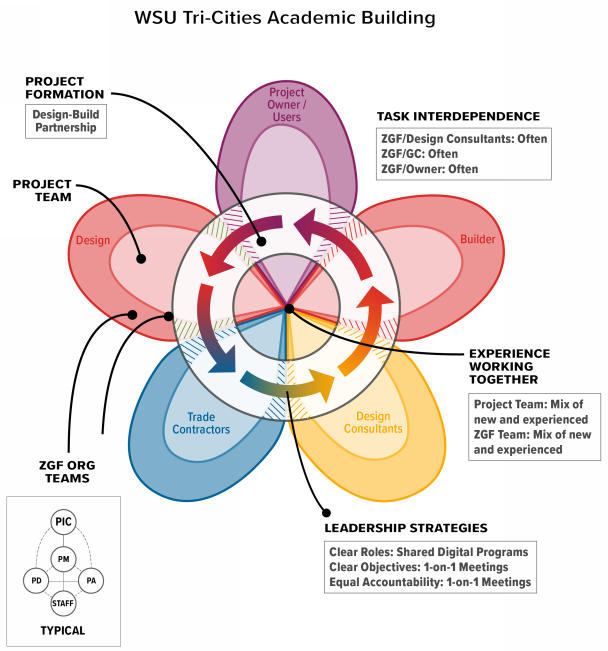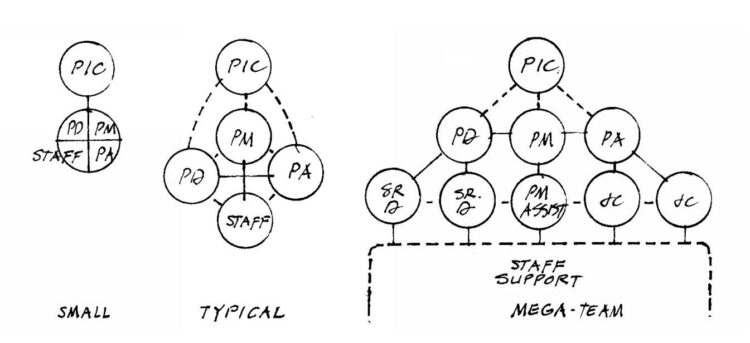August 18, 2020
Designing for Collaboration: Effective project leadership through the formation and support of teams
ARC Fellow: Kirk Hochstatter
Degree Program: PhD in the Built Environment
Faculty Advisor: Tyler Sprague, Architecture
Firm: ZGF
Firm Advisor: Todd Stine
Project dates: Autumn 2019 – Spring 2020
This research focuses on project teams within a single architectural firm, and examines how they work on complex, collaborative project delivery methods. By examining the different scales of the organization (firm), internal project team (inside the firm), and external project members (outside the firm), this research intends to show potential structures and variables that affect the ability of the project team to meet the complex demands that come with Integrated Project Delivery, Design-Build, and other emerging project delivery methods. The recommendations are intended to provide useful information to others on how architecture firms can continue to demonstrate effective project leadership.

Survey responses from the Washington State University Tri-Cities Academic Building project indicate a higher task interdependence among the contractor and design teams as well as more frequent use of shared digital programs. This survey was conducted in the early design and construction stages, which may influence the findings. K. Hochstatter, M. Mills, T. Stine

Contractual agreements for the Seattle Children’s Hospital’s Forest B Expansion project used implied “trust” as the mechanism for teaming for this traditional design-bid-build delivery model.Kirk Hochstatter

These organization charts depict the three most common ZGF teams per the company-published guidelines found in the “Red Book.” Staffing needs and the arrangement of roles can vary depending on the size and scope of the project.ZGF Architects
